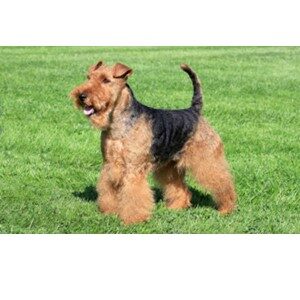Airedale Terrier Dog Beds
Airedales Need a Good Foam Bed!
Introduction
Airedale Terrier dog beds takes into account their medical condition, sleeping style, and preferences. Because of health issues, a memory foam bed is best.
The Airedale Terrier, often called the “King of Terriers,” is a remarkable breed known for its intelligence, versatility, and spirited personality.
Originating in England’s Aire Valley, these dogs were initially bred for hunting otters and rats, but their adaptability has allowed them to excel in various roles, including police work, military service, and as loyal family companions.
As the largest terrier breed, Airedales are robust, confident, and full of energy, making them an excellent choice for active families or individuals who can keep up with their lively nature.
Airedale Terriers are highly intelligent and independent, which makes them both a joy and a challenge to train. They thrive in environments where they are given consistent guidance, mental stimulation, and plenty of physical activity. Their playful and sometimes mischievous demeanor endears them to their owners, but it also means they require patience and a good sense of humor.
This breed’s wiry double coat, which is hypoallergenic, requires regular grooming to keep it looking its best and prevent matting. Despite their toughness and working-dog roots, Airedales are affectionate and form strong bonds with their families.
They are known for their loyalty and protective instincts, which make them excellent watchdogs. For those considering welcoming an Airedale Terrier into their lives, it’s essential to understand their unique needs and characteristics.
This guide provides valuable insights into training, health, behavior, and care tips to ensure a happy and fulfilling relationship with this exceptional breed.
Video: Pros and Cons
This video shows potential new owners what is expected of them of them if they purchase an Airedale Terrier dog.
Best Dog Bed Types
Airedale Terriers are medium-to-large, active, and intelligent dogs that need a durable and comfortable bed to support their joints and provide relaxation after a long day of play or exercise. Here’s a list of the best dog bed types for Airedale Terrier owners:
- Orthopedic Dog Beds
- Why? Airedales can develop joint issues like hip dysplasia as they age. Orthopedic beds provide extra support for their joints and spine.
- Features to Look For:
- Memory foam or high-density foam for support
- Waterproof or washable covers for easy maintenance
- Non-slip bottoms to keep the bed secure
- CertiPUR-US Seal: When shopping for memory foam beds look for the CertiPUR-US seal.
- Top Recommendation: Bedsure Orthopedic Dog Bed, PetFusion Ultimate Dog Bed.
- Elevated Dog Beds
- Why? Perfect for Airedales that run warm or live in warmer climates, as the airflow helps keep them cool.
- Features to Look For:
- Sturdy steel or aluminum frames
- Durable, breathable mesh material
- Indoor/outdoor usability
- Top Recommendation: Coolaroo Elevated Pet Bed, K&H Pet Products Elevated Bed.
- Durable and Chew-Resistant Beds
- Why? Airedales are curious and sometimes mischievous, especially when young, so chew-resistant beds are a great option for durability.
- Features to Look For:
- Reinforced stitching
- Heavy-duty materials like ripstop fabric
- Resistant to digging and chewing
- Top Recommendation: K9 Ballistics Tough Dog Bed, Kuranda Dog Bed.
- Bolster or Sofa-Style Beds
- Why? Airedales often enjoy resting their heads on raised surfaces or leaning into something cozy. Bolsters provide comfort and security.
- Features to Look For:
- Raised edges or bolsters for head support
- Plush and soft materials for comfort
- Removable, washable covers
- Top Recommendation: BarksBar Orthopedic Bolster Bed, Frisco Plush Bolster Bed.
- Washable Dog Beds
- Why? Airedales can get messy with their adventurous nature, so an easily washable bed is essential.
- Features to Look For:
- Fully removable and machine-washable covers
- Quick-drying materials
- Waterproof liners
- Top Recommendation: Furhaven Water-Resistant Bed, Majestic Pet Suede Bagel Bed.
- Travel or Crate Beds
- Why? For Airedales on the go, a travel bed provides comfort during trips or fits snugly in their crates.
- Features to Look For:
- Lightweight and portable
- Roll-up or foldable design
- Durable yet soft padding
- Top Recommendation: Midwest QuietTime Crate Mat, Chuckit! Travel Dog Bed.
Best Dog Bed Brands
- PetFusion
- Key Features:
- Premium memory foam for joint support.
- Waterproof liners to protect against accidents.
- Durable outer covers made of polyester and cotton twill.
- Best Models:
- PetFusion Ultimate Dog Bed: Perfect for Airedales with hip or joint issues. Comes in multiple sizes for medium to large dogs.
- PetFusion Jumbo Lounger: Great for Airedales who like to sprawl or need extra space.
- Why It’s Great for Airedales: Combines orthopedic support with durability for active lifestyles. Covers are easy to wash and replace.
- Furhaven
- Key Features:
- Wide variety of styles, from orthopedic to cooling gel options.
- Budget-friendly while offering comfort and quality.
- Removable, washable covers.
- Best Models:
- Furhaven Plush & Suede Orthopedic Sofa: Ideal for Airedales who like to rest their heads on bolsters.
- Furhaven Cooling Gel Bed: Provides cooling comfort, great for active Airedales prone to overheating.
- Why It’s Great for Airedales: Affordable and functional, with options for cooling, orthopedic, and cozy designs.
- K&H Pet Products
- Key Features:
- Specializes in elevated beds and temperature-regulating options.
- Designed for durability and comfort.
- Best Models:
- K&H Elevated Cooling Bed: Keeps your Airedale cool and comfortable. Perfect for indoor/outdoor use.
- K&H Orthopedic Heated Bed: A great winter bed, providing warmth and joint support for aging Airedales.
- Why It’s Great for Airedales: Versatile for different climates and seasons, with durable materials for their active nature.
- Coolaroo
- Key Features:
- Lightweight and breathable mesh for airflow.
- Chew-resistant and sturdy steel frames.
- Designed for outdoor durability.
- Best Model:
- Coolaroo Original Elevated Pet Bed: Ideal for keeping your Airedale cool in warm climates or for outdoor use.
- Why It’s Great for Airedales: Combines practicality with comfort. Airedales love being outside, and this bed is perfect for patios or yards.
- BarksBar
- Key Features:
- Orthopedic foam base with bolstered edges for head and neck support.
- Easy-to-clean, removable covers.
- Best Model:
- BarksBar Orthopedic Bolster Dog Bed: Offers comfort and style, perfect for lounging after an active day.
- Why It’s Great for Airedales: The bolsters are perfect for Airedales that like to lean or rest their heads.
- K9 Ballistics
- Key Features:
- Tough, chew-resistant fabrics and reinforced stitching.
- Options for orthopedic and elevated beds.
- Best Models:
- K9 Ballistics Chew-Proof Elevated Bed: Nearly indestructible and great for mischievous Airedales.
- K9 Ballistics Tough Orthopedic Bed: Combines chew resistance with memory foam support.
- Why It’s Great for Airedales: Perfect for young, energetic Airedales that might chew or dig.
- Big Barker
- Key Features:
- Therapeutic foam beds specifically designed for large and aging dogs.
- Handmade in the USA with a 10-year guarantee.
- Best Model:
- Big Barker 7” Pillow Top Orthopedic Dog Bed: Large, supportive, and durable.
- Why It’s Great for Airedales: Excellent for older or larger Airedales prone to joint problems.
- Majestic Pet
- Key Features:
- Stylish and cozy bagel-style beds.
- Made with durable, washable materials.
- Best Model:
- Majestic Pet Velvet Bagel Dog Bed: Ultra-comfy with plenty of room for curling up.
- Why It’s Great for Airedales: Combines plush comfort with easy maintenance, ideal for lounging after an active day.
- Kuranda
- Key Features:
- Durable, chew-proof elevated beds with aluminum or steel frames.
- Designed for indoor and outdoor use.
- Best Model:
- Kuranda Chew-Proof Elevated Bed: Perfect for destructive dogs and rough play.
- Why It’s Great for Airedales: Built to withstand their playful energy while staying cool and comfortable.
- MidWest Homes for Pets
- Key Features:
- Soft, portable crate mats and travel beds.
- Affordable yet comfortable.
- Best Model:
- MidWest QuietTime Deluxe Pet Bed: Lightweight and easy to fit in crates or use for travel.
- Why It’s Great for Airedales: Perfect for crate training and on-the-go comfort.
Facts and Fun Facts
Here are some interesting facts about Airedale Terriers for new owners:
Measurements:
- Size: Medium
- Group: Terrier Group
- Height: 23 inches
- Weight: 50 – 70 lbs.
- Length: 30 – 34 inches
- Lifespan: 11 – 14 years
- Fully Grown: 14 – 18 months
- Colors: Black & Tan, Grizzle & Tan
- Popularity: The breed is the 67th most popular in the United States according to the American Kennel Club in 2023.
- Intelligence: This breed is ranked the 29th most intelligent according to Stanley Coren.
- The King of Terriers: Airedale Terriers are the largest of all terrier breeds, earning them the nickname “King of Terriers.”
- Versatile Working Dog: Originally bred in England, Airedales were used for hunting otters and rats. Over time, they’ve served as police dogs, military messengers, and family companions.
- High Energy: These dogs are full of energy and require plenty of exercise. Daily walks, playtime, or activities like agility training will help them thrive.
- Intelligence and Trainability: Airedales are highly intelligent and eager to learn, but they can also be independent thinkers, so training requires patience and consistency.
- Protective Nature: They make excellent watchdogs, as they’re alert, loyal, and protective of their families.
- Coat and Grooming Needs: Airedales have a dense, wiry double coat that needs regular brushing and occasional professional grooming to keep it tidy and healthy.
- Good with Children: They tend to do well with kids due to their playful and friendly nature, but supervision is essential with younger children due to their size and energy.
- Socialization Is Key: Early socialization is crucial to help Airedales develop good manners and prevent territorial or stubborn behaviors.
- Stubborn Streak: Like many terriers, they can be headstrong, so training should be firm yet positive, using rewards and praise.
- Healthy and Hardy: Airedales are generally healthy dogs but can be prone to hip dysplasia and allergies, so regular vet check-ups are essential.
- Adventurous Spirit: They love exploring and may have a tendency to chase smaller animals due to their hunting instincts. A securely fenced yard is a must.
- Affectionate Companions: Despite their independent nature, Airedales are deeply loving and enjoy spending time with their families, often forming strong bonds.
- They Were Originally Used to Hunt Rats: The Airedale Terrier originated in the Aire River Valley in England, where they hunted large rats. Airedales often competed in rat hunting contests, which attracted lots of spectators. Ferrets would be sent into rat burrows to flush out the rodents, and the Airedales would then chase them into the river.
- They’re the Largest of the Terriers: Male Airedale Terriers are about 23 inches tall at the shoulder, making them the largest dogs in the terrier group. The Airedale is sometimes called “The King of Terriers.” His size and intelligence make him an extremely versatile dog; he’s expanded well beyond hunting rats, to hunting large game and performing many other jobs.
Fun Facts
Here’s a list of fun facts about Airedale Terriers:
- World War Heroes: Airedales served as messengers and search-and-rescue dogs during World War I, carrying messages and supplies across dangerous battlefields.
- Royal Connections: They’ve been owned by notable figures, including U.S. President Warren G. Harding, whose Airedale, Laddie Boy, was a frequent presence at the White House.
- Super Swimmers: Originally bred near the River Aire in Yorkshire, England, Airedales are natural swimmers and love water-based activities.
- Movie Stars: Airedales have appeared in several films and TV shows, showcasing their charm and intelligence on screen.
- Big Personalities: Airedales often have a playful and mischievous side, keeping their owners entertained with their antics and sense of humor.
- Nicknames Galore: Besides being the “King of Terriers,” they’re sometimes called “Airedales,” “Waterside Terriers,” or “Bingley Terriers.”
- Great with Tricks: Their intelligence and eagerness make them quick learners for tricks, from basic commands to advanced moves like opening doors or fetching specific items.
- Mustache Masters: Their iconic bearded muzzle gives them a distinguished, almost human-like expression, adding to their quirky charm.
- Diverse Careers: In addition to being hunters and war dogs, Airedales have also worked as therapy dogs, search-and-rescue dogs, and even circus performers.
- Chatterboxes: Airedales are known for their vocal nature, using barks, grumbles, and whines to communicate and express their feelings.
- Love for the Outdoors: These dogs are happiest when they’re exploring, hiking, or playing in large open spaces. They have an adventurous spirit!
- Record Breakers: In 2010, an Airedale Terrier named “Mac” earned the Guinness World Record for the “fastest time to pop 100 balloons by a dog” in just 44.49 seconds!
Health Conditions
Here’s a list of the most common health conditions seen in Airedale Terriers:
- Hip Dysplasia: A genetic condition where the hip joint doesn’t fit together properly, leading to arthritis and mobility issues. Regular exercise and maintaining a healthy weight can help manage this condition.
- Allergies: Airedales can suffer from skin allergies caused by food, environmental factors (like pollen or dust mites), or contact with certain materials. Itching, redness, and ear infections are common signs.
- Hypothyroidism: This is a hormonal imbalance caused by an underactive thyroid gland, leading to symptoms like weight gain, lethargy, and skin issues. It’s usually manageable with medication.
- Bloat (Gastric Dilatation-Volvulus): A serious and potentially life-threatening condition where the stomach twists and traps gas. Immediate veterinary attention is crucial if you notice signs like a distended abdomen, drooling, or restlessness.
- Von Willebrand’s Disease: A genetic blood clotting disorder that can lead to excessive bleeding during injuries or surgeries. Screening is important in breeding programs to reduce its occurrence.
- Progressive Retinal Atrophy (PRA): This inherited condition causes gradual vision loss and, eventually, blindness. Regular eye check-ups are important to monitor their eye health.
- Heart Disease: Airedales are prone to developing heart conditions like mitral valve disease or dilated cardiomyopathy. Symptoms may include coughing, lethargy, and difficulty breathing.
- Cataracts: This clouding of the eye lens can impair vision and is common in aging Airedales. Cataract surgery is an option in severe cases.
- Cancer: Airedales are at risk for certain cancers, including lymphoma and hemangiosarcoma. Early detection is key, so regular vet visits are important.
- Dermatitis: Due to their wiry coats, Airedales can develop skin conditions, especially if their grooming needs aren’t met. Regular brushing and bathing help prevent skin irritation.
- Elbow Dysplasia: Similar to hip dysplasia, this joint condition can cause lameness or arthritis in the front legs. Proper exercise and weight management can reduce its impact.
- Autoimmune Diseases: Conditions like autoimmune hemolytic anemia (AIHA) can occasionally affect this breed, where the immune system attacks its own red blood cells.
To help prevent or manage these conditions, ensure regular veterinary check-ups, maintain a balanced diet, and provide proper exercise and care for your Airedale Terrier.
Behavior Issues
Here’s a list of common behavior issues in Airedale Terriers and tips to address them:
- Stubbornness: Airedales are independent thinkers, which can make training challenging. Consistency, patience, and positive reinforcement are key to overcoming their stubborn streak.
- Excessive Barking: Their vocal nature means they might bark frequently, whether to alert you, express excitement, or out of boredom. Teaching a “quiet” command early can help manage this.
- Chewing: Airedales love to chew, especially as puppies. Provide plenty of appropriate chew toys and redirect them from furniture or shoes to satisfy their chewing instincts.
- Digging: As natural hunters, they enjoy digging. This can be managed by giving them a designated digging area or redirecting their energy with games and toys.
- Chasing Instincts: Their strong prey drive may lead to chasing smaller animals, cars, or even bikes. Training a reliable recall command and keeping them on a leash or in a fenced yard helps prevent this.
- Jumping Up: Airedales can get overly excited and jump on people, which might be intimidating due to their size. Teaching them to greet people calmly and reinforcing good behavior helps reduce this.
- Resource Guarding: Some Airedales may guard their food, toys, or other possessions. Early socialization and teaching commands like “leave it” or “drop it” can help prevent this issue.
- Separation Anxiety: They’re loyal and bond closely with their families, so they might develop anxiety when left alone. Gradual desensitization and creating a safe, comfortable space can help.
- Overexcitement: Airedales are high-energy dogs and may become overly excitable, especially around new people or in stimulating environments. Regular exercise and mental stimulation can help calm them.
- Territorial Behavior: They can be protective and may become territorial if not properly socialized. Introduce them to different environments, people, and other animals early to reduce this tendency.
- Pulling on the Leash: Their strength and energy can lead to leash-pulling during walks. Training with a front-clip harness and teaching proper leash manners can address this.
- Nipping and Mouthing: Common in puppies, this behavior stems from their playful and hunting instincts. Redirect their nipping to toys and discourage rough play to prevent it from continuing into adulthood.
By addressing these potential behavior issues early with consistent training, socialization, and positive reinforcement, new Airedale owners can enjoy a well-behaved and happy companion.
Tips for New Owners
Here’s a list of tips to share with new Airedale Terrier owners:
- Start Training Early: Airedales are intelligent but can be stubborn. Begin obedience training and establish boundaries as soon as possible using positive reinforcement techniques.
- Socialize Extensively: Expose your Airedale to a variety of people, pets, and environments early to reduce territorial or aloof behavior and help them develop into well-rounded companions.
- Provide Daily Exercise: Airedales are high-energy dogs that thrive on physical and mental activity. Aim for at least 60–90 minutes of exercise daily, including walks, playtime, and activities like agility or fetch.
- Offer Mental Stimulation: Puzzle toys, interactive games, and training sessions help keep their sharp minds engaged and prevent boredom, which can lead to destructive behavior.
- Establish Grooming Routines: Brush their wiry coat weekly to prevent matting and have them hand-stripped or professionally groomed every 8–12 weeks to maintain their appearance.
- Secure Your Yard: Airedales are natural explorers with a strong prey drive. Ensure your yard is securely fenced, as they may try to escape to chase small animals.
- Use Positive Reinforcement: Harsh training methods don’t work well with Airedales. Reward-based training with treats, praise, or toys is more effective and builds trust.
- Be Patient and Consistent: Airedales can have a mischievous streak, so stay calm and consistent during training. They’ll test boundaries but respond well to firm and fair guidance.
- Invest in Durable Toys: Their powerful jaws mean they can destroy flimsy toys quickly. Provide sturdy chew toys designed for strong chewers.
- Supervise Around Small Animals: Due to their hunting instincts, Airedales might not always get along with cats, rabbits, or other small pets. Introduce them carefully and monitor interactions.
- Prevent Separation Anxiety: Gradually train your Airedale to be comfortable alone by practicing short absences and providing comforting items like puzzle feeders or a favorite toy.
- Feed a High-Quality Diet: Choose a balanced, high-quality dog food appropriate for their size, age, and activity level. Regular feeding schedules help maintain their energy and health.
- Monitor for Health Issues: Be proactive with regular vet check-ups and keep an eye out for signs of common health conditions like hip dysplasia, allergies, or thyroid problems.
- Teach Proper Leash Manners: Start leash training early to prevent pulling during walks. A no-pull harness can help if needed.
- Encourage Safe Chewing: Chewing helps satisfy their instincts and keep teeth clean. Provide safe options like dental chews or tough rubber toys.
- Stay Involved: Airedales thrive on family interaction and don’t do well when left alone for long periods. Include them in daily activities to keep them happy and well-adjusted.
- Be Prepared for Humor: Airedales are known for their playful, clownish personalities. Embrace their goofy antics and enjoy their sense of fun.
- Enroll in Puppy Classes: Group classes are a great way to build basic skills and confidence while introducing them to new dogs and people.
- Stay Consistent with Rules: Airedales can learn quickly, but they’ll also test limits. Make sure everyone in the household enforces the same rules to avoid confusion.
- Love Them Unconditionally: Airedales are loyal, affectionate, and full of personality. With proper care and attention, they’ll reward you with endless love and entertainment.
Costs of Ownership
Here’s a list of common costs associated with owning an Airedale Terrier to share with new owners: Initial Costs
- Purchase or Adoption Fee:
- Buying from a reputable breeder: $1,000–$3,000
- Adoption fee from a rescue or shelter: $200–$500
- Spaying/Neutering: $150–$500 (if not already done by the breeder or shelter)
- Initial Vet Visits: $100–$300 for vaccinations, deworming, and health check-ups
- Microchipping: $30–$50 to ensure your dog can be identified if lost
- Basic Supplies:
- Crate: $50–$150
- Bed: $40–$100
- Leash, collar, and harness: $20–$50
- Food and water bowls: $15–$40
- Toys: $20–$50
- Training Classes: $100–$300 for group puppy classes or obedience training
Recurring Costs
- Food: $50–$100 per month, depending on the quality of the dog food and your Airedale’s size and activity level
- Grooming:
- Professional grooming (hand-stripping or clipping): $60–$100 per session, every 8–12 weeks
- Grooming tools for home care: $30–$100
- Vet Visits: $200–$500 per year for routine check-ups, vaccinations, and preventative care
- Flea, Tick, and Heartworm Prevention: $20–$50 per month
- Pet Insurance: $30–$70 per month, depending on coverage and your location
- Toys and Chews: $20–$50 per month, as Airedales are strong chewers and need durable options
- License and Registration: $10–$30 annually (varies by location)
Occasional or Unexpected Costs
- Emergency Vet Bills: Unexpected illnesses or injuries can cost $500–$5,000 or more. A pet insurance policy or savings fund can help offset these costs.
- Behavioral Training: $50–$150 per session if additional training or help with behavior issues is needed
- Boarding or Pet Sitting: $25–$75 per day when traveling without your dog
- Replacement Supplies: Beds, crates, or toys may need replacing over time due to wear and tear
- Advanced Medical Care: Treatments for conditions like hip dysplasia or cancer can range from $1,000–$5,000 or more
Optional Costs
- Doggy Daycare: $20–$50 per day, if you need to keep your Airedale entertained while at work
- Training Workshops or Sports: Activities like agility or scent work classes can cost $100–$300 per course
Safe Foods and Foods to Avoid
- Lean Meats: Cooked chicken, turkey, and beef (without bones, seasonings, or excess fat).
- Fish: Salmon and sardines (cooked and deboned; avoid raw fish).
- Eggs: Cooked eggs are a great source of protein.
- Fruits: Apples (seeded), blueberries, bananas, watermelon (seedless), and strawberries.
- Vegetables: Carrots, green beans, sweet potatoes, broccoli (in moderation), and spinach.
- Pumpkin: Plain, cooked, or canned pumpkin is excellent for digestion.
- Rice and Oats: Cooked white rice or plain oatmeal for sensitive stomachs.
- Peanut Butter: Plain, unsweetened, xylitol-free peanut butter as an occasional treat.
- Cheese: Small amounts of low-fat cheese if tolerated.
- Plain Yogurt: Good for gut health if lactose isn’t an issue.
- Coconut Oil: A small amount can help with coat and skin health.
- Dog-Safe Treats: Commercial treats labeled as safe and nutritious.
Foods to Avoid
- Chocolate: Contains theobromine, which is toxic to dogs and can cause vomiting, seizures, or death.
- Grapes and Raisins: Even small amounts can cause kidney failure.
- Onions and Garlic: Toxic to dogs and can cause anemia.
- Avocado: Contains persin, which can cause stomach upset and toxicity in dogs.
- Alcohol: Even a small amount can lead to poisoning or death.
- Caffeine: Found in coffee, tea, energy drinks, and chocolate; it can overstimulate their nervous system.
- Macadamia Nuts: Can cause lethargy, vomiting, and tremors.
- Xylitol: Found in sugar-free gums, candies, and some peanut butters; it’s highly toxic and can lead to liver failure.
- Fatty or Fried Foods: Can cause pancreatitis or upset stomachs.
- Cooked Bones: They can splinter and cause internal injuries or blockages.
- Raw Dough: The yeast can expand in their stomach, causing bloating and discomfort.
- Raw Eggs and Meat: Risk of salmonella or E. coli unless safely prepared and sourced.
- Salt: Too much salt can cause excessive thirst, urination, and even sodium poisoning.
- Artificial Sweeteners: Especially aspartame, which can be toxic in large amounts.
- Dairy Products: Some dogs are lactose intolerant and may experience digestive upset.
General Tips
- Always introduce new foods in small amounts to ensure your dog doesn’t have an adverse reaction.
- Avoid seasonings, spices, and sauces when offering human foods.
- Stick to a balanced, veterinarian-recommended diet to ensure your Airedale Terrier stays healthy and happy.
- Be sure that treats do not exceed more than 10% of your dog’s daily caloric intake.
This list will help new owners keep their Airedale Terrier safe and well-nourished!
Conclusion
Owning an Airedale Terrier is a rewarding journey filled with laughter, adventure, and a deep bond that only this spirited breed can offer. With their intelligence, energy, and loyal nature, Airedales make exceptional companions for those who are ready to embrace their unique qualities and meet their needs.
However, potential owners should be prepared for the commitment required to raise and care for this lively breed. Airedales thrive in environments where they are given plenty of opportunities for physical and mental stimulation.
Regular exercise, interactive games, and consistent training are key to keeping them happy and well-behaved. Their independent streak and strong-willed personality may present challenges, but with patience, positive reinforcement, and a sense of humor, these challenges can quickly transform into rewarding moments of growth and connection.
Health is another important consideration for Airedale owners. Regular vet check-ups, a balanced diet, and attention to grooming will help ensure your dog’s overall well-being. Being aware of common health issues such as hip dysplasia, allergies, and bloat will also enable you to take proactive steps in maintaining their health.
Socialization is crucial for this breed to develop into a well-rounded and confident companion. Introducing your Airedale to various environments, people, and other animals early in life will help them adapt and minimize undesirable behaviors like excessive barking or territorial tendencies.
Ultimately, the Airedale Terrier’s loyalty, charm, and vibrant personality make them a one-of-a-kind addition to any household.
By understanding their needs and investing time and effort into their care, owners will be rewarded with a devoted, entertaining, and loving companion.
Whether you’re exploring the outdoors together, engaging in training sessions, or simply enjoying their playful antics at home, life with an Airedale Terrier is sure to be an enriching and joyful experience.
Shop Dog Beds
You can shop for a dog bed below. Just click or select a bed of choice and you will be taken to Amazon to place the order.
As an Amazon Associate, I earn from qualifying purchases. Your purchase price is the same as if you shop directly on Amazon.
The price at time of publish is included below to give you an idea of what the price is; however, it is subject to change.
Cooling Gel Dog Beds
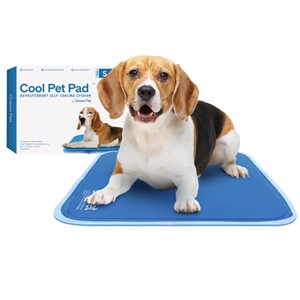
The Green Pet Shop Cooling Mat
Price At Time of Publish $40.00

MH MYLUNE HOME Self Cooling Mat
Price At Time of Publish $40.00
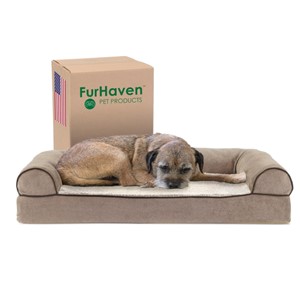
Furhaven Pet Products Cooling Gel Bolsters Small Bed
Price At Time of Publish $45.00
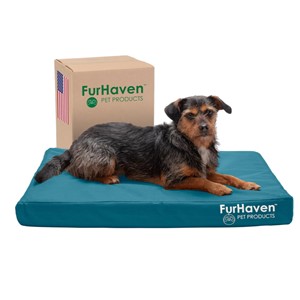
Furhaven Cooling Gel Medium Bed
Price At Time of Publish $42.00

ARF Pets Cooling Gel Pad
Price At Time of Publish $35.00
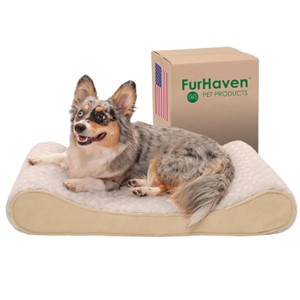
Furhaven Cooling Gel Small Bed
Price At Time of Publish $50.00
Price At Time of Publish $50.00
Orthopedic Dog Beds
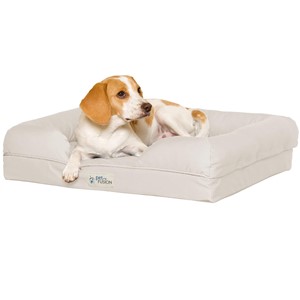
PetFusion Orthopedic Dod Bed
Price At Time of Publish $80.00
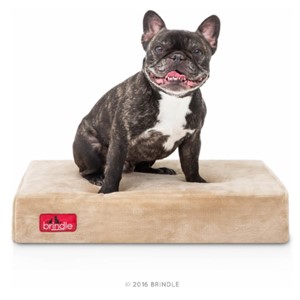
Brindle Orthopedic Bed Khaki
Price At Time of Publish $30.00
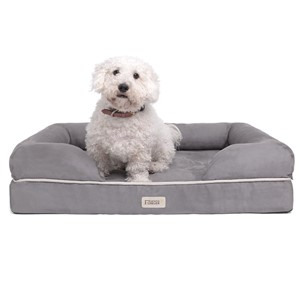
Friends Forever Orthopedic Bolster Bed
Price At Time of Publish $53.00
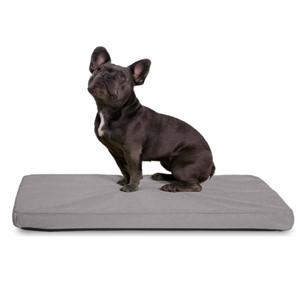
K9 Ballistics Tough Orthopedic Small Crate Bed
Price At Time of Publish $89.00
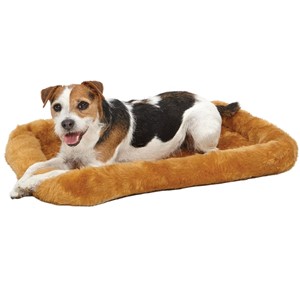
MidWest Homes Small Bolster Dog Bed
Price At Time of Publish $10.00
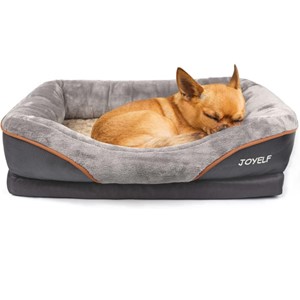
JOYELF Orthopedic Small Sofa Bed
Price At Time of Publish $40.00
Bolster Dog Beds
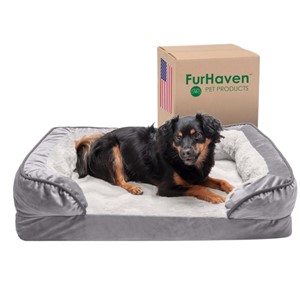
Furhaven Small-Medium Bolster Dog Bed
Price At Time of Publish $57.00
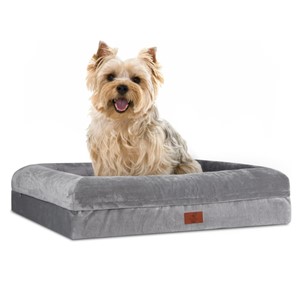
Yiruka Small Bolster Sofa Dog Bed
Price At Time of Publish $40.00
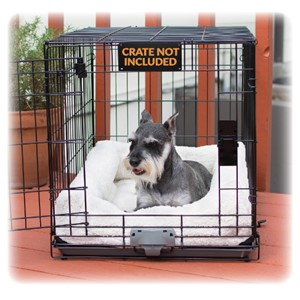
K&H Pet Products Bolster Crate Pad
Price At Time of Publish $22.00
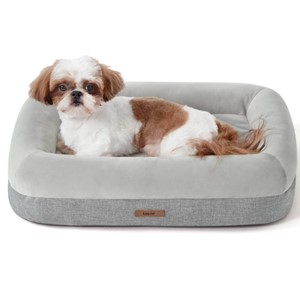
Leasure Small Bolster Dog Bed
Price At Time of Publish $40.00
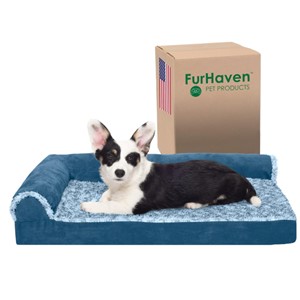
Furhaven Small-Medium L-Shaped Bed
Price At Time of Publish $39.00
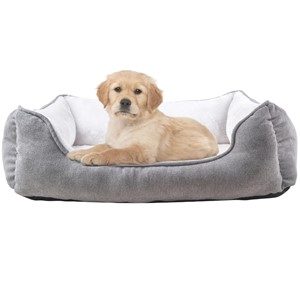
Long Rich Bolster Small Bed
Price At Time of Publish $27.00
Elevated Dog Beds
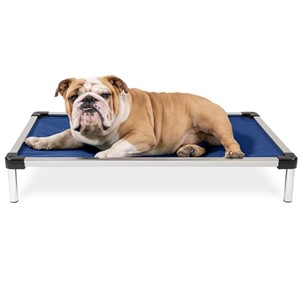
K9 Ballistics Chew Proof Elevated Small Bed
Price At Time of Publish $129.00
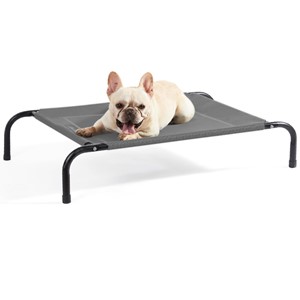
Bedsure Medium Elevated Dog Bed
Price At Time of Publish $33.00
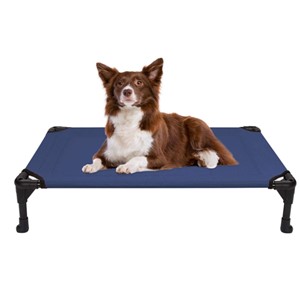
Veehoo Medium Elevated Dog Bed
Price At Time of Publish $45.00
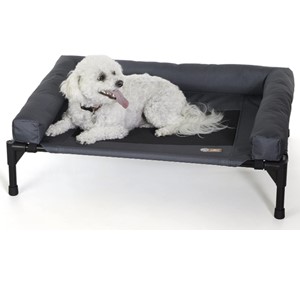
K&H Pet Products Elevated Bolster Dog Bed
Price At Time of Publish $57.00
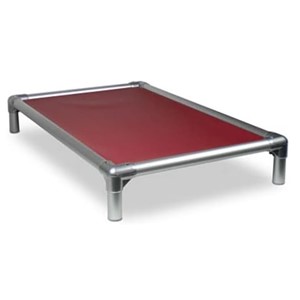
Kuranda Elevated Chew Proof Small Dog Bed
Price At Time of Publish $134.00
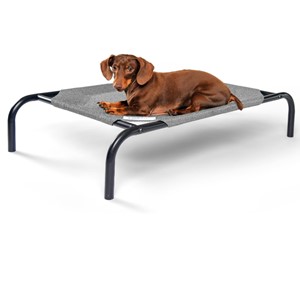
Coolaroo Small Elevated Dog Bed
Price At Time of Publish $21.00
Shop Cave/Donut Dog Beds
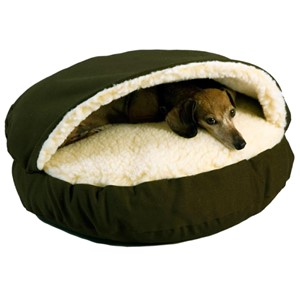
Snoozer Cozy Cave Bed
Price At Time of Publish $87.00
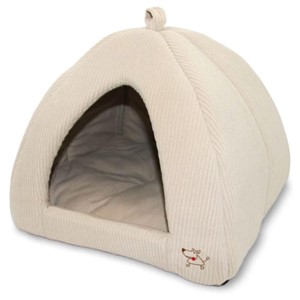
Best Pet Supplies Tent Bed
Price At Time of Publish $23.00
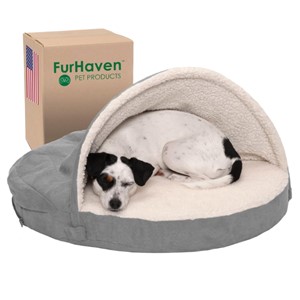
Furhaven Round Orthopedic Cave Bed
Price At Time of Publish $30.00
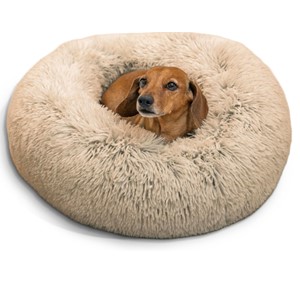
Best Friends by Sheri Original Calming Donut Bed
Price At Time of Publish $25.00
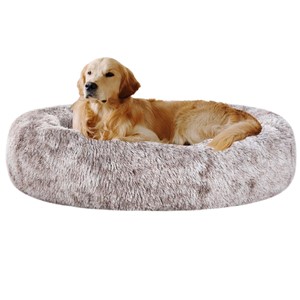
Coohom Oval Calming Donut Cuddler Bed
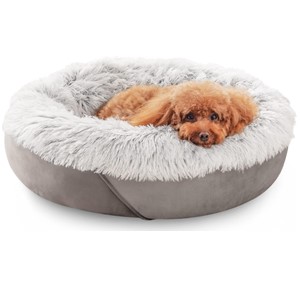
JOEJOY Calming Donut Small Dog Bed
Price At Time of Publish $33.00
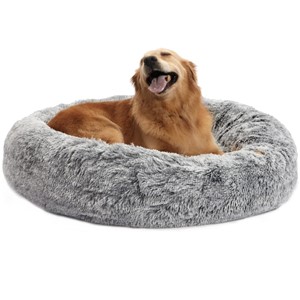
Bedfolks Calming Donut Dog Bed
Price At Time of Publish $66.00
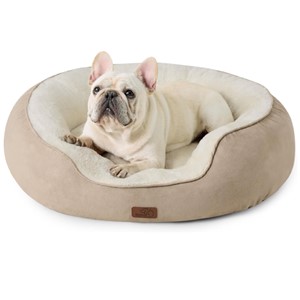
Bedsure Medium Donut Dog Bed
Price At Time of Publish $36.00

Bedsure Medium Donut Dog Bed
Price At Time of Publish $40.00
Related Articles
Below are some other articles you might be interested in reading. Just select or click on a topic of interest.
- Best Healthy Dog Food Brands
- Best Dog Training Toys
- Dog Training Techniques
- Feeding Dogs Different Life Stages
- How To Train A Puppy
- The Top 75 Dog Breeds
- Positive Reinforcement for Dog Training
- Puppy Proofing Your House
- Using Alexa for Dog Behaviors
Go back to the Dog Luxury Beds home page.
